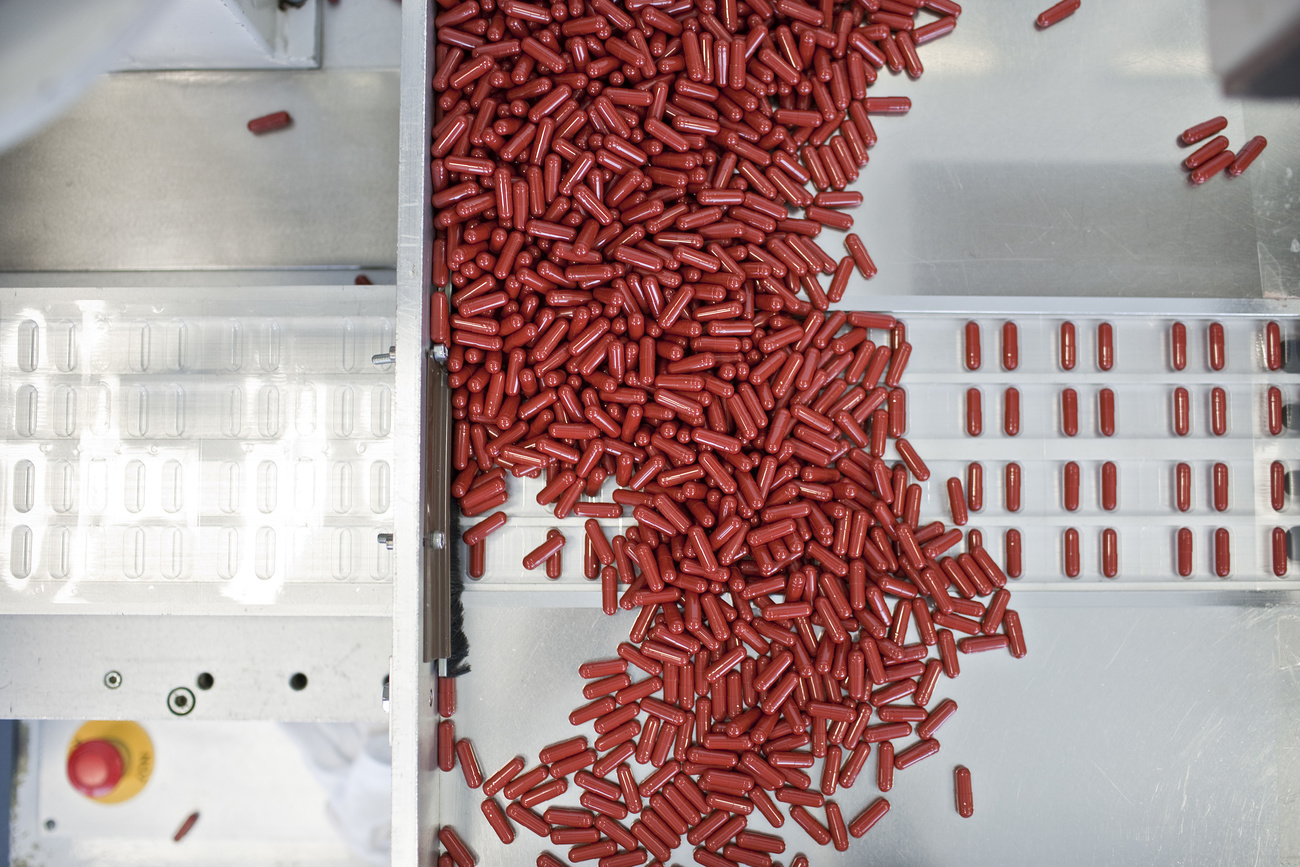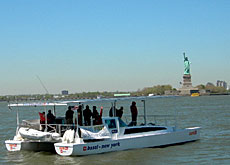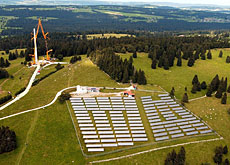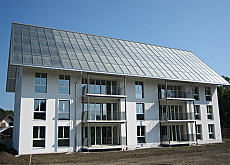
Solar island generates green power

A Swiss-designed artificial island is set to make its first appearance in the Gulf state of Ras al Khaimah, with the aim of providing a source of clean energy.
The project, a collaboration between Neuchâtel’s Swiss Center for Electronics and Microtechnology (CSEM) and the local government, should be able to produce electricity and hydrogen using solar power.
Solar power is becoming increasingly common. Homeowners in Switzerland and elsewhere are prepared to install panels as costs start to drop, while bigger projects such as the array on Bern’s football stadium are also becoming an option.
But large-scale solar power facilities are still rare. The cost of panels still makes it prohibitive to build vast arrays, notwithstanding the problem of the space needed to set them up.
But according to Thomas Hinderling, the centre’s director, solar energy will become a major power resource in the next 20 to 30 years and will be the leading form of renewable energy.
“A third of the world’s future power needs could be covered by solar energy,” Hinderling told swissinfo. “But to collect that energy, you need an array surface equivalent to 60 per cent the size of France.”
Solution
The solution proposed by the centre is to build artificial islands that can sit offshore, where surface is not a problem.
To cut costs, the usual solar panels would not be used, but rather a concentrator that heats water running through pipes. The steam is then used to generate electricity.
Because of its floating structure, the island could be easily turned to always face the sun, generating maximum power.
And to avoid having to connect the island to the mainland, the electricity could also be used to make hydrogen that could then be stored on the island before being shipped elsewhere.
“A floating infrastructure means a very low construction cost,” said Hinderling. “There are no support structures to build.”
However, building such a facility involves a few restrictions. There has to be around 350 days a year of sunshine, and it needs to sit somewhere between the tropics, near the equator for optimal performance.
In many respects, the coastal region of the United Arab Emirates fits the bill, and this is why Ras al Khaimah is footing a large part of the development costs, contributing $5 million (SFr6.1 million) to the project.
“We began working on renewable energies with the emirate three years ago,” Hinderling said. “The market with the biggest potential for solar and water technology is in that region, so that is where we have to work.”
Challenges
The biggest hurdle to the project seems to be the construction of the island itself. For example it is still unknown how the infrastructure will react in high winds, Hinderling said.
“We have done simulations that have not revealed any problems, but it is not until we have tested in the real world that we will know if it works,” he added.
In situations such as storms or violent winds, he reckons that an island would be able to power its way out of danger before bad weather struck.
The construction of a prototype is now underway in the Gulf. It will have a diameter of 100 metres, one-tenth of the size of an actual solar island.
Just don’t go looking for it off the coast of the Emirates: initial tests will take place inland, with the island floating on a water channel.
swissinfo, Scott Capper in Neuchâtel
Annual world energy consumption in 2050 is assumed to be the equivalent of 20 billion tons of petrol a year.
Experts believe that solar energy – the biggest renewable source – could shoulder a large part of our power needs by then.
To supply solar energy equivalent to roughly a quarter of the estimated global demand in 2030, a surface area of 300,000 square kilometres of arrays is needed.
This represents just 0.05% of the globe’s surface.
The Swiss Center for Electronics and Microtechnology is active in the fields of micro/nanotechnology, microelectronics, systems engineering as well as information and communication technologies.
It supplies customised microsystems, microelectronic designs and system solutions to industrial partners, as well as services for high-tech coatings and new materials.
The centre also develops its own commercial activities, either with existing companies or by creating spin-offs and start-up companies – 23 over the past ten years.
It has also signed a long-term contract with the Swiss authorities to finance its own applied research.
At the end of 2006 the company had 310 employees, over two-thirds of whom hold an academic degree. Its income reached €36 million (SFr60 million).

In compliance with the JTI standards
More: SWI swissinfo.ch certified by the Journalism Trust Initiative









































You can find an overview of ongoing debates with our journalists here . Please join us!
If you want to start a conversation about a topic raised in this article or want to report factual errors, email us at english@swissinfo.ch.